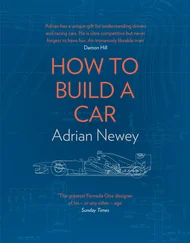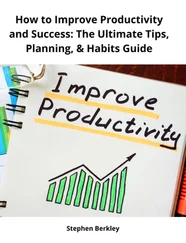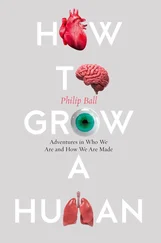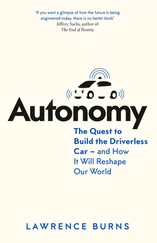Eyal, Nir - Hooked - How to Build Habit-Forming Products
Здесь есть возможность читать онлайн «Eyal, Nir - Hooked - How to Build Habit-Forming Products» весь текст электронной книги совершенно бесплатно (целиком полную версию без сокращений). В некоторых случаях можно слушать аудио, скачать через торрент в формате fb2 и присутствует краткое содержание. Год выпуска: 2014, Издательство: Nir Eyal, Жанр: Старинная литература, на английском языке. Описание произведения, (предисловие) а так же отзывы посетителей доступны на портале библиотеки ЛибКат.
- Название:Hooked: How to Build Habit-Forming Products
- Автор:
- Издательство:Nir Eyal
- Жанр:
- Год:2014
- ISBN:нет данных
- Рейтинг книги:5 / 5. Голосов: 1
-
Избранное:Добавить в избранное
- Отзывы:
-
Ваша оценка:
- 100
- 1
- 2
- 3
- 4
- 5
Hooked: How to Build Habit-Forming Products: краткое содержание, описание и аннотация
Предлагаем к чтению аннотацию, описание, краткое содержание или предисловие (зависит от того, что написал сам автор книги «Hooked: How to Build Habit-Forming Products»). Если вы не нашли необходимую информацию о книге — напишите в комментариях, мы постараемся отыскать её.
Hooked: How to Build Habit-Forming Products — читать онлайн бесплатно полную книгу (весь текст) целиком
Ниже представлен текст книги, разбитый по страницам. Система сохранения места последней прочитанной страницы, позволяет с удобством читать онлайн бесплатно книгу «Hooked: How to Build Habit-Forming Products», без необходимости каждый раз заново искать на чём Вы остановились. Поставьте закладку, и сможете в любой момент перейти на страницу, на которой закончили чтение.
Интервал:
Закладка:
The Facilitator
When you create something that you would use and that you believe makes the user’s life better, you are facilitating a healthy habit. It is important to note that only you can decide if you would actually use the product or service, and what “materially improving the life of the user” really means in light of what you are creating.
If you find yourself squirming as you ask yourself these questions or needing to qualify or justify your answers, STOP! You failed. You have to actually want to use the product and believe it materially benefits your life as well as the lives of your users.
One exception is if you would have been a user in your younger years. For example, in the case of an education company, you may not need to use the service right now, but are certain you would have used it in your not-so-distant past. Note however that the further you are from your former self, the lower your odds of success.
In building a habit for a user other than yourself, you can not consider yourself a facilitator unless you have experienced the problem first-hand.
Jake Harriman grew up on a small farm in West Virginia. After graduating from the U.S. Naval Academy, Harriman served as an Infantry and Special Operations Platoon Commander in the Marine Corps. He was in Iraq during the 2003 invasion and led men into fierce gun battles with enemy combatants. Later, he assisted with disaster relief in Indonesia and Sri Lanka after the 2004 Asian tsunami.
Harriman says his encounter with extreme poverty abroad changed his life. After seven and a half years of active duty, Harriman realized that guns alone could not stop terrorists intent on harming Americans. “Desperate people commit desperate acts,” Harriman says. After his service, Harriman founded Nuru International, a social venture targeting extreme poverty by changing the habits of people living in rural areas.
However, exactly how Harriman would change the lives of the poorest people in the world was not clear to him until he decided to live among them. In Kenya, he discovered that basic practices of modern agriculture — like proper seed spacing — were still not used. But Harriman knew that simply teaching farmers new behaviors would not be enough.
Instead, by drawing upon his own rural upbringing and experience living with the farmers, Harriman uncovered the obstacles in their way. He soon learned that the lack of access to financing for high quality seeds and fertilizer kept farmers from utilizing yield-boosting techniques.
Today, Nuru is equipping farmers in Kenya and Ethiopia, helping them rise out of grinding poverty. It was only by becoming one of his users that Harriman could design solutions to meet their needs. [cxx]
Although it is a long way from Africa to Silicon Valley, the well-documented stories of the founders of Facebook and Twitter reveal they would likely see themselves as making products in the facilitator quadrant. Today, a new breed of companies is creating products to improve lives by creating healthy habits. Whether getting users to exercise more, creating a habit of journaling, or improving back posture, these companies are run by authentic entrepreneurs who desperately want their products to exist, firstly to satisfy their own needs.
But what if the usage of a well-intended product becomes extreme, even harmful? What about the users who go beyond forming habits, becoming full-fledged addicts?
First, it is important to recognize that the percentage of users who form a detrimental dependency is very small. Industry estimates for pathological users of even the most habit-forming technologies, such as slot machines gambling, are just one percent. [cxxi]Addiction tends to manifest in people with a particular psychological profile. However, simply brushing off the issue as too small to matter dismisses the very real problems caused by technology addiction.
For the first time, however, companies have access to data that could be used to flag which users are using their products too much. Whether companies choose to act on that data in a way that aids their users is, of course, a question of corporate responsibility. Companies building habit-forming technologies have a moral obligation — and perhaps someday a legal mandate — to inform and protect users who are forming unhealthy attachments to their products. It would behoove entrepreneurs building potentially addictive products to set guidelines for identifying and helping addicted users.
However, for the overwhelming majority of users, addiction to a product will never be a problem. Even though the world is becoming a potentially more addictive place, most people have the ability to self-regulate their behaviors.
The role of facilitator fulfills the moral obligation for entrepreneurs building a product they will use, and which they believe materially improves the lives of others. As long as they have procedures in place to assist those who form unhealthy addictions, the designer can act with a clean conscience. To take liberties with Mahatma Gandhi’s famous quote, facilitators “ build the change they want to see in the world.”
The Peddler
Heady altruistic ambitions can at times outpace reality. Too often, designers of manipulative technology have a strong motivation to improve the lives of their users, but when pressed, they admit they would not actually use their own creations. Their holier-than-thou products often try to “gamify” some task no one actually wants to do by inserting run-of-the-mill incentives such as badges or points that don’t actually hold value for their users.
Fitness apps, charity websites, and products that claim to suddenly turn hard work into fun often fall in this quadrant. But possibly the most common example of peddlers is in advertising.
Countless companies convince themselves they’re making ad campaigns users will love. They expect their videos to go viral and their branded apps to be used daily. Their so-called “reality distortion fields” keep them from asking the critical question, “Would I actually find this useful?” [cxxii]The answer to this uncomfortable question is nearly always “No,” so they twist their thinking until they can imagine a user they believe might find the ad valuable.
Materially improving users’ lives is a tall order, and attempting to create a persuasive technology that you do not use yourself is incredibly difficult. This puts designers at a heavy disadvantage because of their disconnect with their products and users. There’s nothing immoral about peddling; in fact, many companies working on solutions for others do so out of purely altruistic reasons. It’s just that the odds of successfully designing products for a customer you don’t know extremely well are depressingly low. Peddlers tend to lack the empathy and insights needed to create something users actually want. Often the peddler's project results in a time-wasting failure because the designers did not fully understand their users. As a result, no one finds the product useful.
The Entertainer
Sometimes product-makers just want to have fun. If creators of a potentially addictive technology make something that they use but can’t in good conscience claim improves users’ lives, they’re making entertainment.
Entertainment is art and is important for its own sake. Art provides joy, helps us see the world differently, and connects us with the human condition. These are all important and age-old pursuits. Entertainment, however, has particular attributes of which the entrepreneur, employee, and investor should be aware when using the Manipulation Matrix.
Art is often fleeting; products that form habits around entertainment tend to fade quickly from users’ lives. A hit song, repeated over and over again in the mind, becomes nostalgia after it is replaced by the next chart-topper. A book like this one is read and thought about for a while until the next interesting piece of brain candy comes along. As we learned in the chapter on variable rewards, games like FarmVille and Angry Birds engross users, but then are relegated to the gaming dustbin along with other hyper-addictive has-beens such as Pac Man and Mario Bros.
Читать дальшеИнтервал:
Закладка:
Похожие книги на «Hooked: How to Build Habit-Forming Products»
Представляем Вашему вниманию похожие книги на «Hooked: How to Build Habit-Forming Products» списком для выбора. Мы отобрали схожую по названию и смыслу литературу в надежде предоставить читателям больше вариантов отыскать новые, интересные, ещё непрочитанные произведения.
Обсуждение, отзывы о книге «Hooked: How to Build Habit-Forming Products» и просто собственные мнения читателей. Оставьте ваши комментарии, напишите, что Вы думаете о произведении, его смысле или главных героях. Укажите что конкретно понравилось, а что нет, и почему Вы так считаете.












